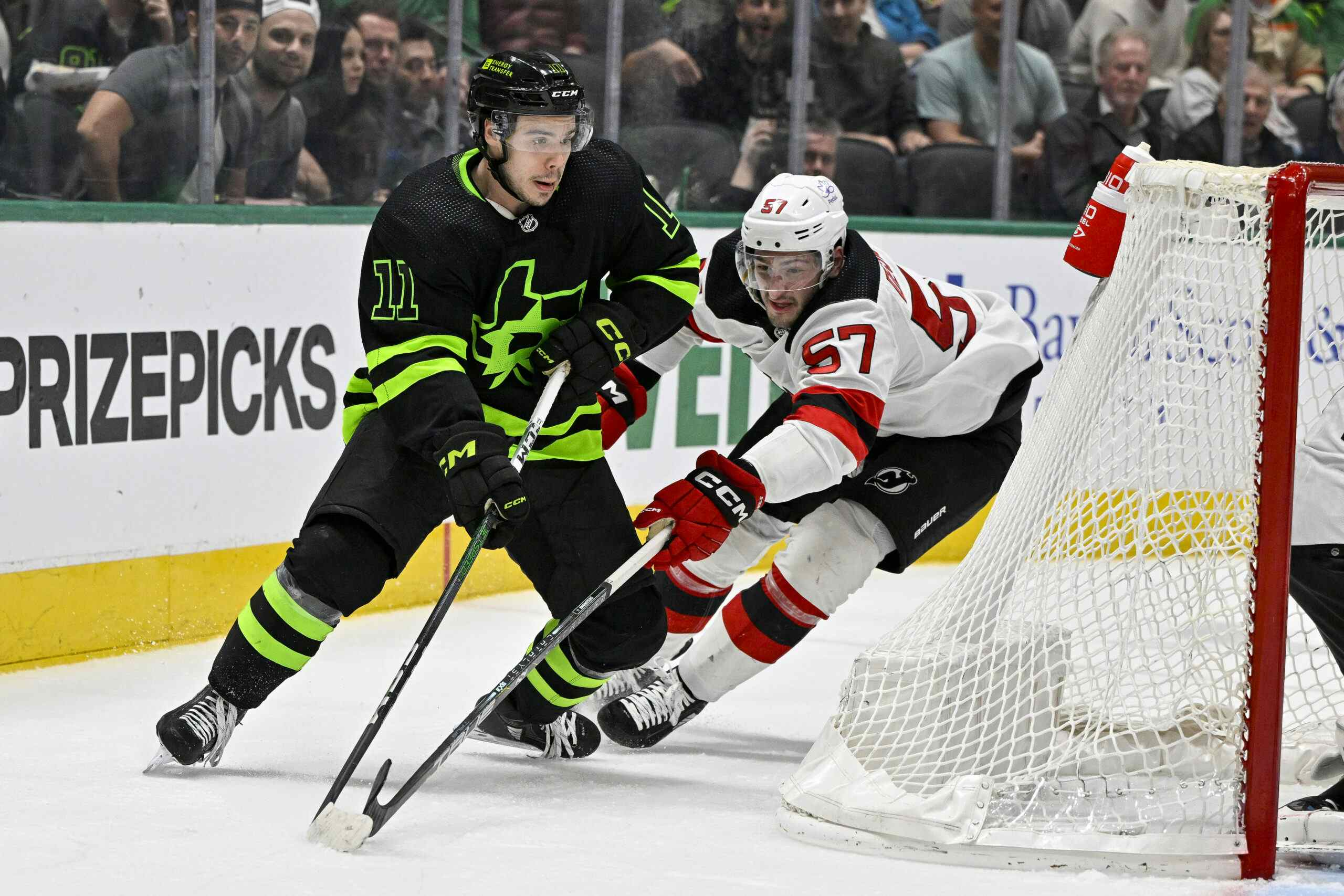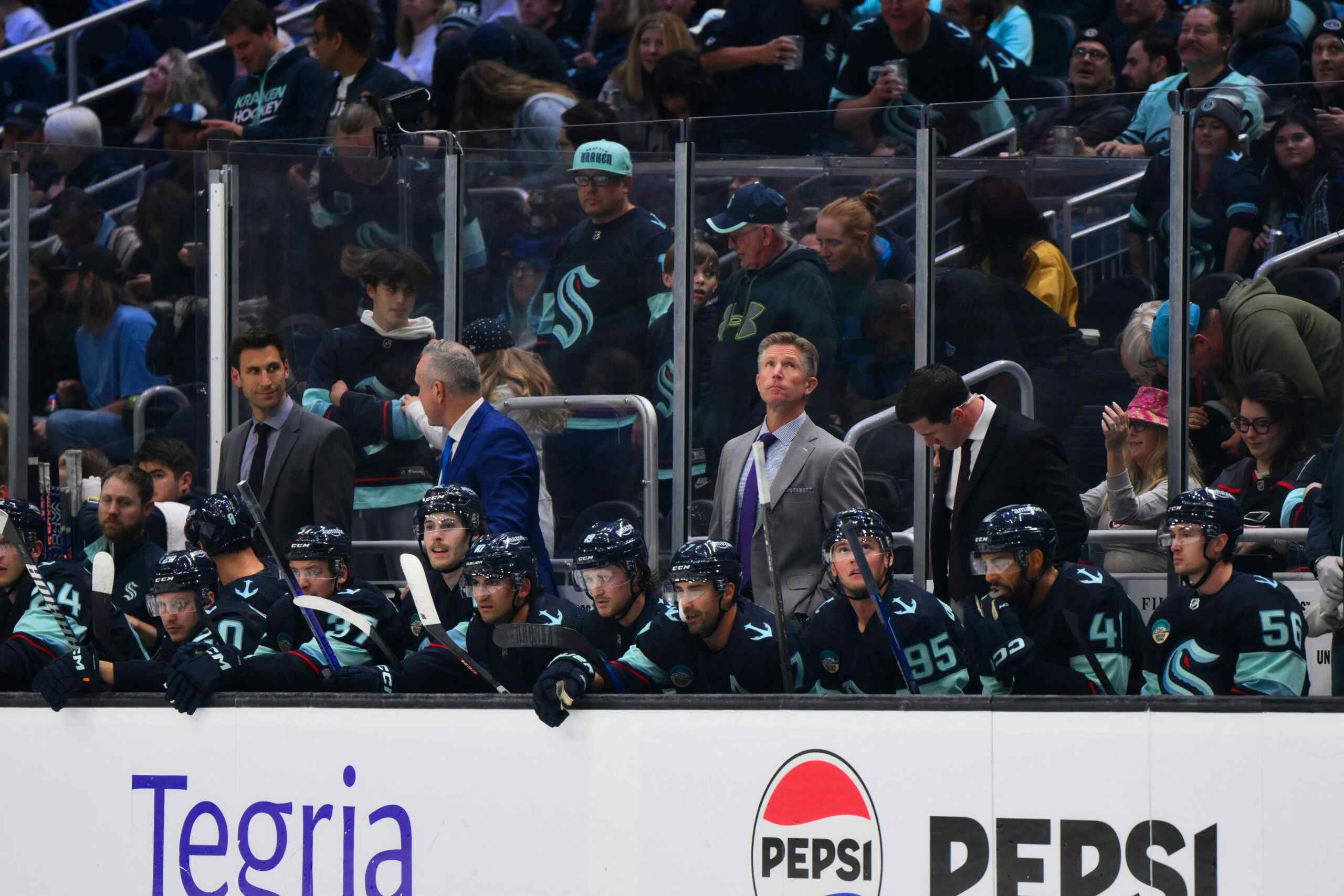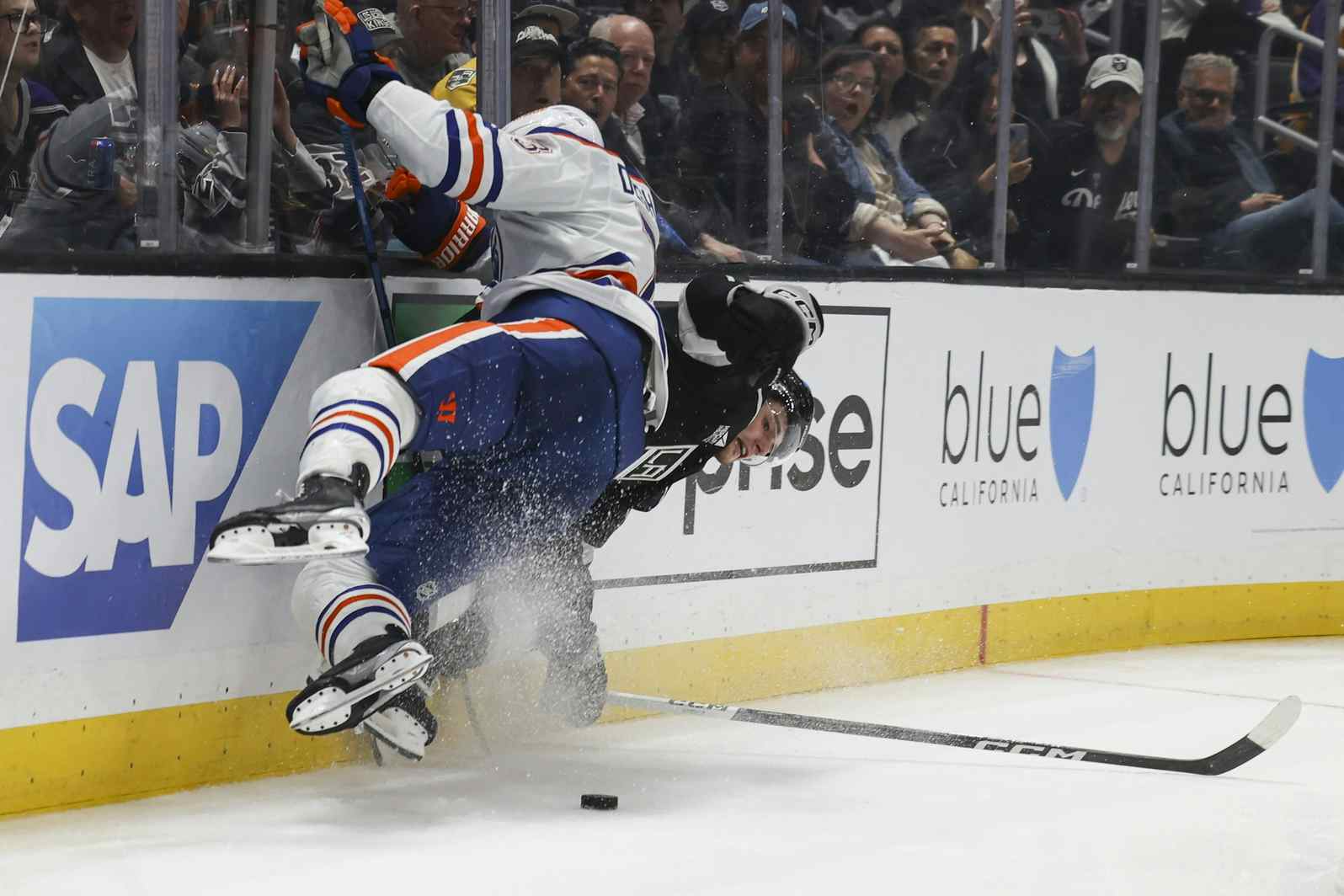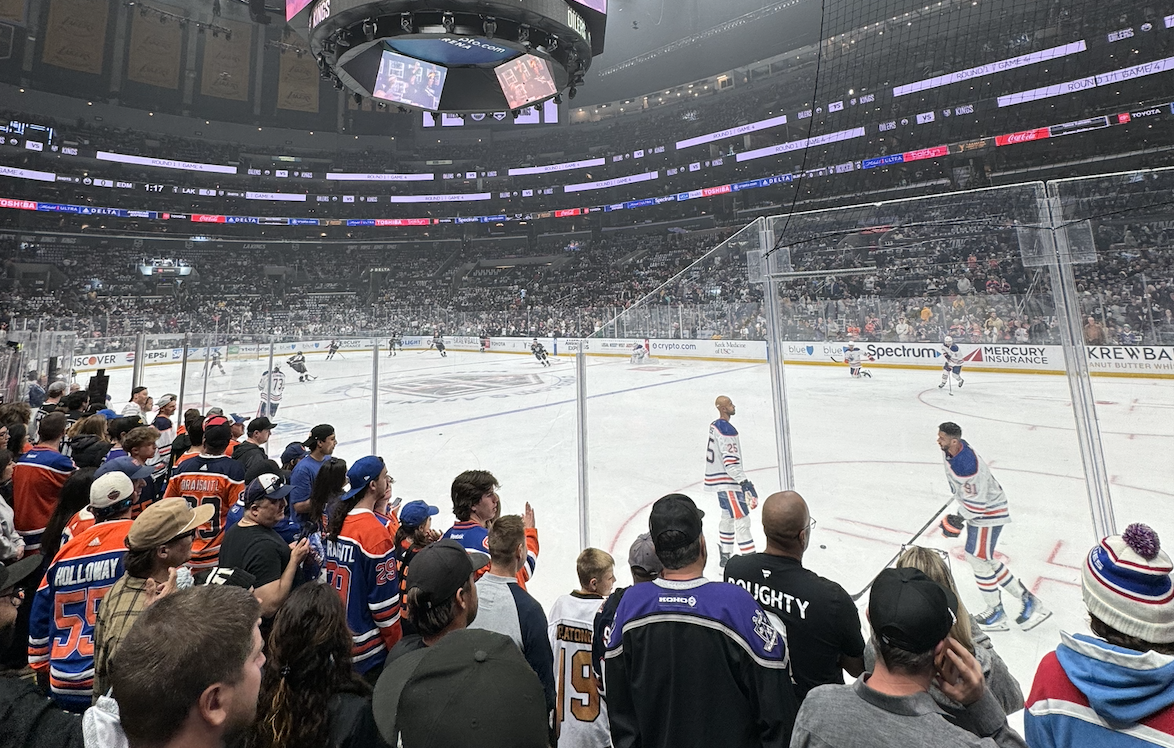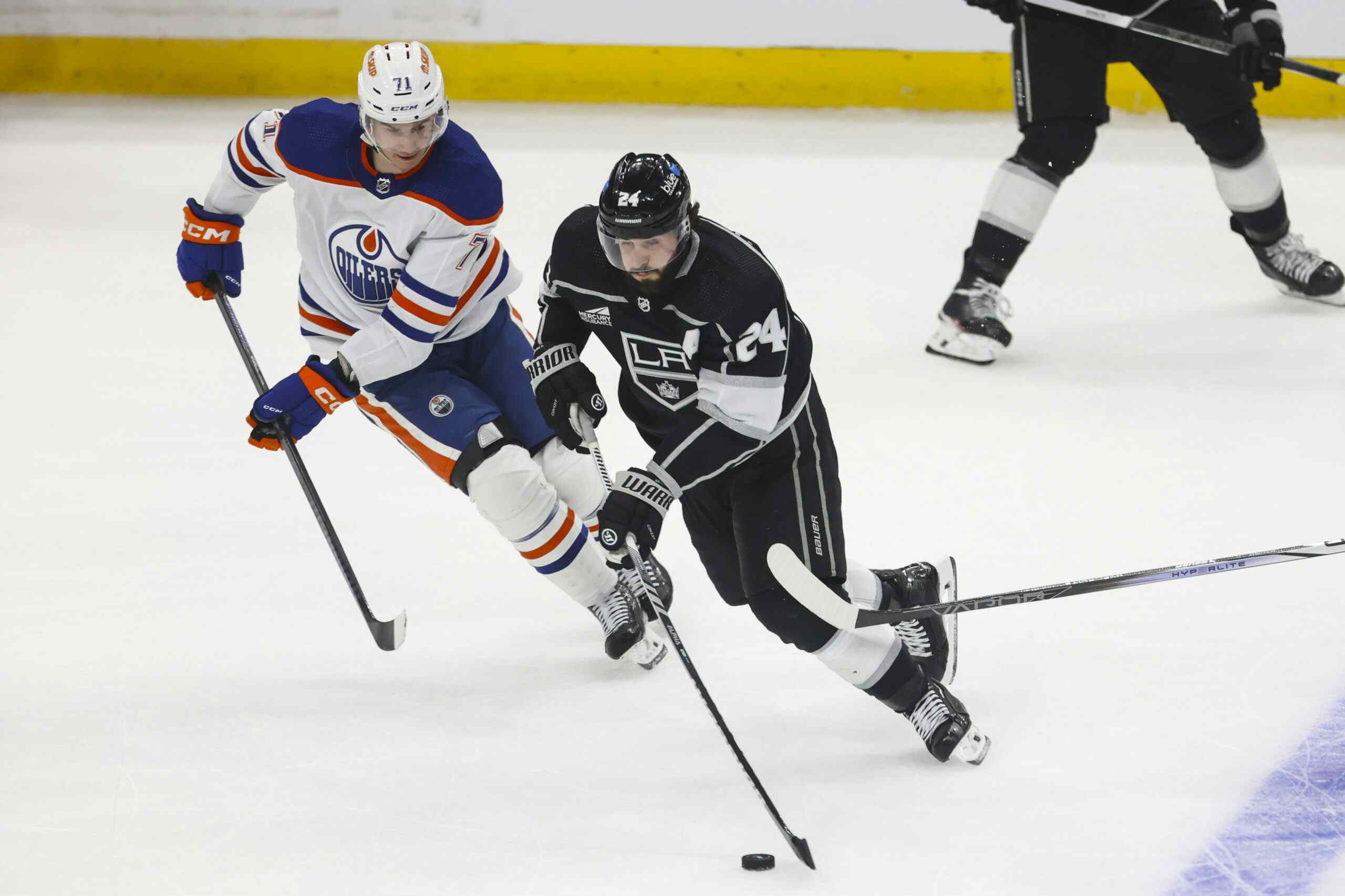ON’s Top Prospects Countdown – No. 2: Evan Bouchard
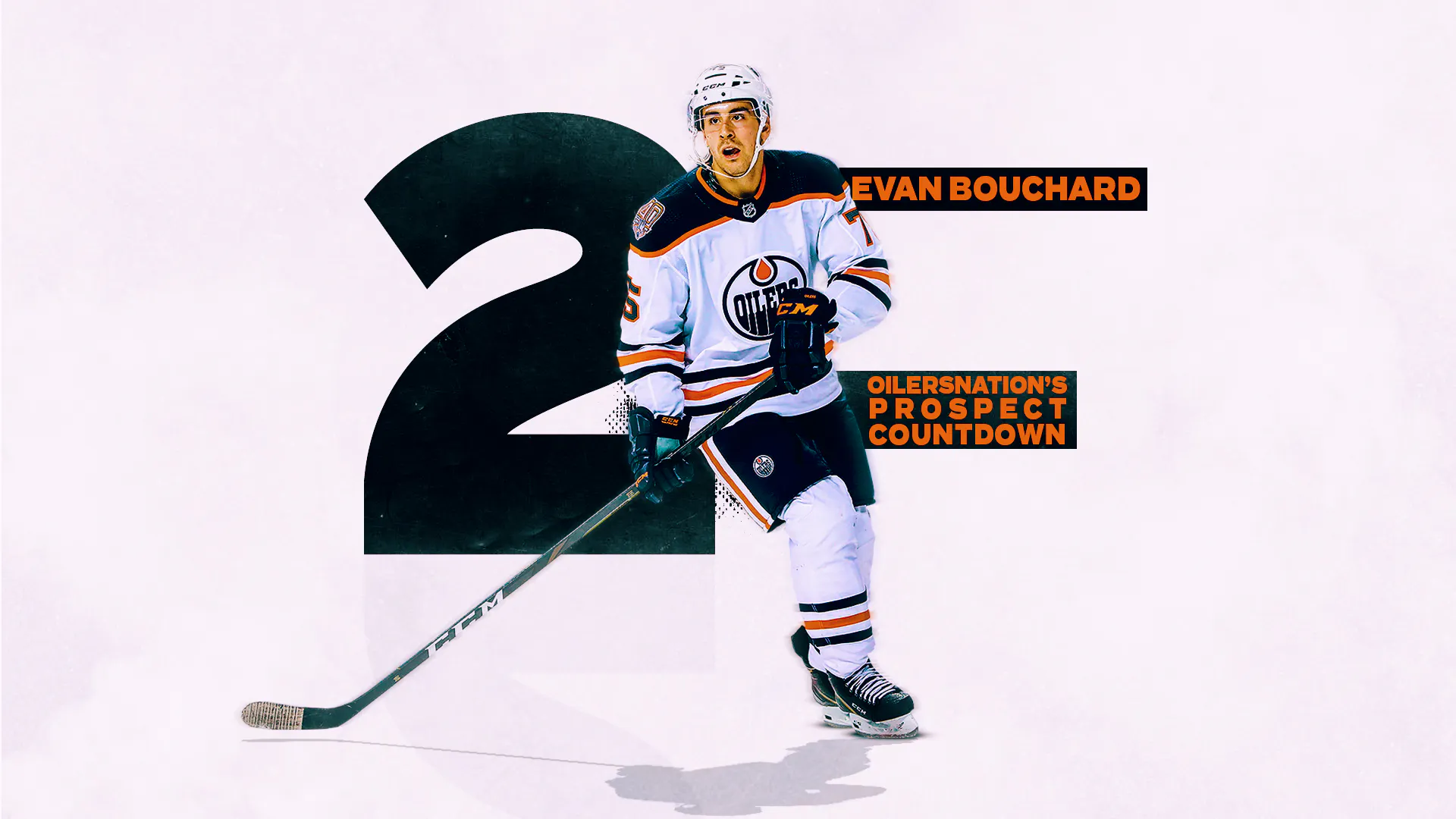
By Cam Lewis
3 years agoAfter going forward-heavy at the 2020 draft, the Oilers’ farm system is much more balanced than it was just a few months ago.
Adding first-round pick Dylan Holloway and late-round steals Tyler Tullio and Carter Savoie gives Edmonton some much-needed forward depth, but the strong point of the team’s system is still undoubtedly on the blueline.
At the top of our prospect rankings, we have Evan Bouchard and Philip Broberg, the Oilers’ top selections from the 2018 and 2019 draft and the team’s hopeful top defensive pairing of the future.
First, I’ll talk about Bouchard, the puck-moving maestro who’s currently tearing it up over in Sweden playing in the country’s second-highest league. With Bouchard, the question isn’t really if he’ll be an NHL player, it’s when, and how good he’ll be.
Evan Bouchard
Position: Defence
Shoots: Right
Nationality: Canada
Date of Birth: Oct. 20, 1999
Drafted: 2018, No. 10 overall (EDM)
Height: 6’3″ / 191 cm
Weight: 194 lbs / 88 kg
Shoots: Right
Nationality: Canada
Date of Birth: Oct. 20, 1999
Drafted: 2018, No. 10 overall (EDM)
Height: 6’3″ / 191 cm
Weight: 194 lbs / 88 kg

Failed to load video.
Given his late birthday, Bouchard got to have a third go-around with the London Knights of the OHL before being eligible for the NHL draft. In 2017-18, Bouchard already looked well ahead of the competition in the league, as he posted a whopping 87 points over 67 games for the Knights. That performance resulted in him being selected No. 10 overall by the Oilers at the 2018 draft.
The following season, Bouchard was given a seven-game cup of coffee with the Oilers largely because the team had such a glaring need for a puck-moving defenceman on their blueline. Apparently, general Peter Chiarelli wanted to keep Bouchard up, while head coach Todd McLellan was adamant that he got to spend more time in major junior.
The handling of Bouchard since his stint with the Oilers represents a massive and much-needed shift in philosophy from the organization when it comes to prospects.
Bouchard went back down to the OHL and recorded 53 points over 45 games and then went on to post a ridiculous 21 points in 11 playoff games. He also played for Team Canada at the World Juniors and joined the Bakersfield Condors for their playoff run, where he’d hit the ground running at the professional level with eight points in eight games.
Here’s where that shift in prospect philosophy comes in. Ken Holland took over the Oilers in May of 2019, inheriting Bouchard as the organization’s top prospect. Based on his 2018-19 season’s play at the OHL, AHL, WJC, and NHL levels, it was easy to conclude that Bouchard was capable of playing on an NHL blueline in 2019-20.
Instead, Bouchard spent the entire 2019-20 season in the AHL. This conservative approach is the opposite of what we’ve seen from the Oilers over the past decade-and-a-half. From an undersized Sam Gagner jumping right to the NHL to Justin Schultz playing top-pairing minutes straight out of college to Jesse Puljujarvi coming overseas as an 18-year-old, the Oilers have notoriously thrown young players into the deep end in order to both fill holes on their roster and give fans a shiny new toy to be excited about.
Rather than putting Bouchard into a sink-or-swim situation, he got to spend his 2019-20 season adjusting to the pro game in Bakersfield, honing his craft with an excellent defenceman coach in Dave Manson. He put up 36 points in 54 games, showing noticeable improvement in the second half of the season.
In his first 27 games before Christmas, Bouchard had 15 points and a minus-14 rating. In his next 27 games after Christmas, he recorded 21 points and a minus-four rating. The offence isn’t a concern for Bouchard, it’s his defensive play. The change in plus-minus (I know this isn’t an ideal stat, but it’s all the AHL offers) indicates an improvement in the two-way realm of Bouchard’s game.
All in all, Bouchard’s jump from major junior to the AHL was impressive. For the sake of comparison, Bouchard’s 0.67 points-per-game is right on par with what P.K. Subban did (0.69 ppg) in his only AHL season before jumping to the NHL.
It’s also better than the production of players like Shea Weber (0.59 ppg), Roman Josi (0.58 ppg), and T.J. Brodie (0.50 ppg) at a similar age in the AHL, and only Mike Green (0.77 ppg) and John Carlson (0.81 ppg) are very far ahead of Bouchard’s rookie season. That’s some pretty impressive company.
Of course, I should mention that there are also names like Yannick Weber (0.65 ppg), Matt Lashoff (0.56 ppg), and Kyle Cumiskey (0.52) who posted promising production at a young age in the AHL that never developed into top-four defencemen at the NHL level. The thing Bouchard has over these three names, though, is elite OHL production, so I don’t think there’s much risk of him following their paths.
There’s one final comparison I want to address, the one drawn between Bouchard and former No. 4 overall pick, Griffin Reinhart. The comparison here stems from Bouchard being knocked for his skating ability like Reinhart was when he was drafted.
I don’t think this is an apt comparison. While Bouchard’s lack of speed and mobility might ultimately hold him back from becoming a top-pairing defenceman, his elite vision, creativity, and passing will result in him being able to play a role on an NHL team. Reinhart never had that ability and he never produced anywhere near the level Bouchard did, either in junior or in the AHL.
The question with Bouchard is whether he’ll reach his potential and become a very good defenceman like John Carlson or if he’ll become a quality middle-pairing defender like Jason Demers. Based on his production, ending up a full-on bust like Reinhart isn’t really on the radar for Bouchard.
So, what’s next? Ken Holland has again opted to go the conservative route with Bouchard. He signed puck-moving defender Tyson Barrie to a one-year deal this off-season, ultimately buying Bouchard more time in the AHL with Dave Manson. There’s very little doubt that Bouchard is good enough for the NHL right now, but taking it slow with such an important prospect is a nice change of pace for this organization.
For reference, players who I consider to be “prospects” for this countdown are skaters who have played fewer than 50 NHL games and goaltenders who have played fewer than 25 NHL games. I’m basing the rankings on a combination of upside and the likelihood of reaching that potential.
Recent articles from Cam Lewis

